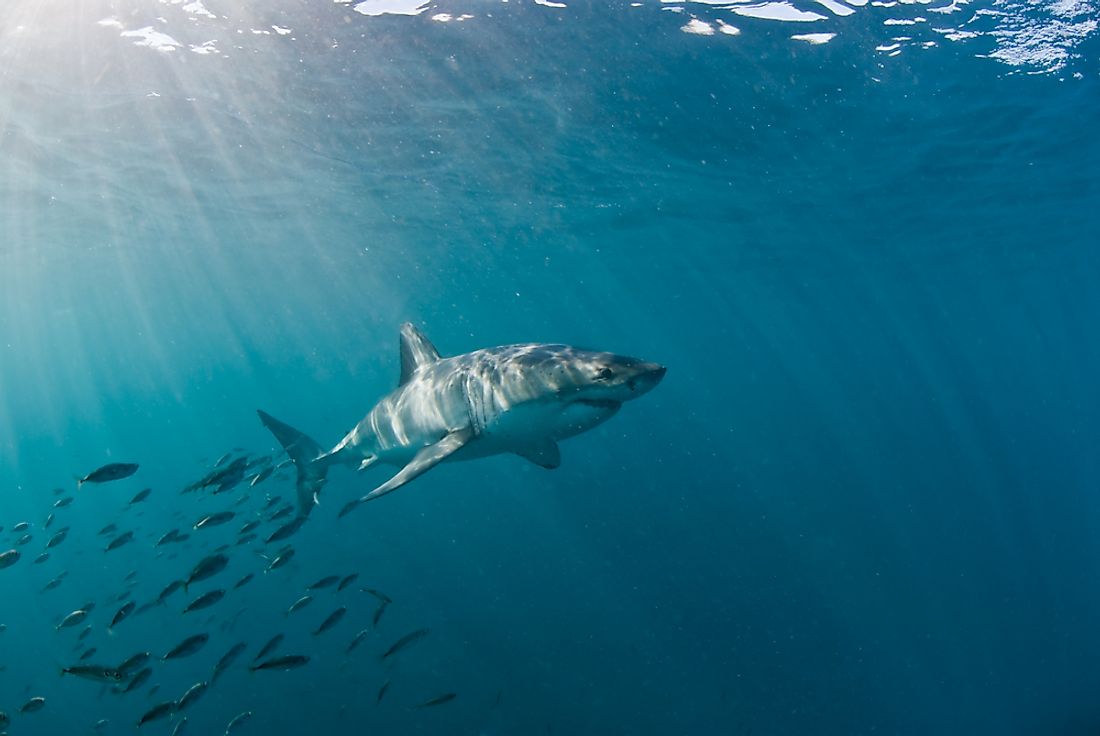Facts About the Great White Shark

The great white shark, also called the white shark or the great white, refers to a large species of mackerel shark that lives in most parts of the world.
Appearance
A typical male is between 11 and 13 feet in length while females average between 15 and 16 feet in length. Typically, adults average between 1,151 and 1,700 pounds. However, some females can grow up to lengths of 20 feet and can weigh up to 4,200 pounds when they mature. Visually, they can be identified by their large snouts that are conically shaped. Other visual clues include a white underbelly with a grey or sometimes brown or blue dorsal region. Like plenty of other shark species, they have rows of serrated teeth situated behind the main teeth which serve the purpose of replacing broken ones.
Habitat and Range
Great whites exist in most water bodies around the world with temperatures between 54 and 75 °F, regardless of whether the water body is coastal or offshore. However, more of them are located in Chile, Oceania, United States, South Africa, the Mediterranean, and Japan. Researchers have identified Dyer Island in South Africa as one of the places on earth that has one of the highest density of great white shark’s population.
Diet
The great white is a predator that mainly feeds on marine creatures such as toothed whales, sea turtles, pinnipeds, and other creatures. Younger white sharks whose jaws are still underdeveloped feed primarily on small fish and other small marine creatures until their jaws mature when they reach around 9.8 feet in length. At around 13 feet, they have been known to focus mainly on marine mammals. There have been reports of attacks on humans but very few deaths since they generally prefer fatty foods.
Reproduction
Sharks take quite a long time to reach maturity. Initially, scientists believed that they mature sexually at the age of 15. However, other studies have shown that great white mature at the age of 26 for males while females mature at the age of 33. Despite these great leaps in shark lifespan, there is little data on the reproduction habits of the sharks. There has never been an observed birth of a great white shark. However, pregnant females have been observed and the gestation period determined to be 11 months. Further studies show that they are ovoviviparous which means their eggs hatch in the uterus where they continue development until birth. The unborn pups begin jaw development in the first month where they feed on ova that the mother produces. This sort of feeding is known as oophagy. At birth, the pups are between 47 and 59 inches.
Great White Shark Conservation
The IUCN Red List classifies it as vulnerable. The reason is that they take a long time to reproduce and are illegally captured by fishermen for illegal trade. This trade has been fuelled by their portrayal as vicious creatures in Hollywood films.
Other Interesting Facts about Great White Sharks
Studies have shown that great whites can live for as long as 70 years thus making the species one of the longest-living fish species known to man. Further, they can swim at speeds of up to 35 mph and reach depths as far as 3,900 feet.











